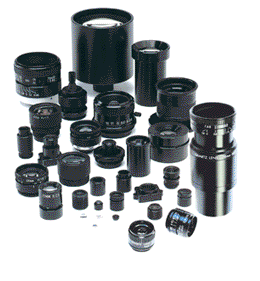High resolution lenses for machine vision — standard and custom lens design
Hi Resolution Optics Enhance Retinal Scans
High Resolution Lenses for machine vision, instrumentation, inspection and vibration-sensitive applications. Standard and custom hi-res lens assemblies.

Hi Resolution Optics
Medical researchers are using ultra-high resolution optical technologies to observe the capillaries of the retina. Through the use of the ultra-high resolution optical cameras that offer increased instrument sensitivity to offset the increased scatter pattern noted when the retina becomes thick and when the capillaries are deeply embedded, researchers are better able to note changes in the retina.
It’s been shown that ultra high resolution optics deliver on a promise as an option for a non-invasive way to map the minute details of the networks of the capillaries in the retina. Images taken from seven patients involved in a study were used as a way to compare the entoptic diagrams against the ultra high resolution optic technology and it was shown that the high-res optics detected more distinct capillary features.
Researchers discovered the new imaging technology took better quality images that captured the beginning clinical stages of ocular inflammation in mice. The high resolution optics were useful in the catching the beginning stages of eye diseases that can lead to blindness. In the testing phases of the research, the high resolution optical technologies were able to monitor changes in the mouse retinas over time without the need for anesthesia and caused the animals no distress.
The study in the mice honed in on a condition that affects humans called posterior uveitis, a disease that is difficult to monitor through the current technologies. With the use of the high resolution optics researchers were able to see eye changes that were previously undetectable. Being able to effectively monitor changes in the eye through the use of non invasive procedures or sub-retinal injections is a boon to the medical research field and for the patients involved.
Being able to improve detection through the use of high resolution optics, used in conjunction with existing medical techniques available for monitoring the progression of eye diseases is the goal of the study.